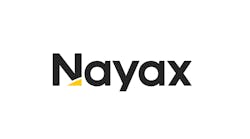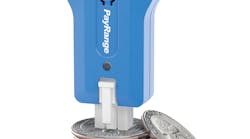Offering multiple payment options is integral to micro market success.
As the COVID-19 pandemic has demonstrated, technology plays a critical role in an operation’s success. In addition to enabling operators to provide superior customer service, technology solutions streamline the payments process and offer multiple methods of payments that micro market customers are comfortable with.
Automatic Merchandiser asked industry experts to identify the top trends in micro markets payment systems and technology, including the use of cash versus cashless payments, and how operators should proceed in 2020 and beyond.
Push for contactless amid COVID-19
The rise of contactless payments has soared due to the COVID-19 pandemic, as consumers want to avoid touching common surfaces in the workplace, especially when purchasing food and beverage products.
Paresh Patel, founder and CEO of PayRange, encourages operators to eliminate the need for consumers to touch machines and payments in order to help them protect themselves from the coronavirus.
“Adoption was rising for digital payments in the unattended retail and micro markets space, but the pandemic really helped open people’s eyes to the importance of a touch-free transaction,” he said. “So many other stores and merchants have stopped touching cards and in some cases even stopped accepting cash, so the need for a touch-free payment option was made plain to those who might not have considered that type of payment solution before.”
Elyssa Steiner, vice president of marketing at USA Technologies, said the company noticed that the ratio of all cashless options had increased by about 3% over the course of the first 10 weeks of the pandemic. She anticipates the use of contactless payments in unattended retail will continue to grow.
Carly Furman, CEO of Nayax LLC, said, “We see the cashless payment trend increasing, even while the crisis is happening, with a shift towards the use of contactless transactions.”
Contactless tapping of an NFC-enabled chip card or mobile wallet app on an EMV-certified terminal, such as Nayax’s devices, does not require touching a pin pad. This has been gaining traction in the U.S. since it is an easy, fast, and safe way to pay, Furman said.
“As unattended and vending machine purchases inherently reduce person-to-person contact, vending purchases may very well increase in demand, especially when the use of credit card payments via Nayax terminals are available,” she remarked.
In addition, major credit/debit card brands are committing to deploying hundreds of millions of contactless capable cards in the U.S. by the end of 2020, she noted.
“The ability to offer cashless payment capabilities encourages consumer confidence,” she said.
Companies that provide their employees with micro markets also seek touch-free payment systems to assure their employees that the office environment is safe and in compliance with state reopening orders, while also getting them back to normalcy, said Michael Johnson, co-founder and CEO of Yoke Payments. Touch-free payment options, like the Yoke Pay mobile app, can also make checkout quicker, reducing lines in break rooms. Operators also are able to directly communicate and engage with end users.
“With the Yoke Pay mobile app, operators can accommodate their locations’ new safety guidelines while continuing to reap the significant benefits of installing micro markets instead of vending,” Johnson said. “Operators can grow markets without the need for a kiosk, reducing costs and accommodating the new social distancing norms. Our self-checkout app allows shoppers to add products to a shopping cart and check out directly from their phones. This Yoke Pay enabled grab-and-go experience gets customers through the entire checkout process without touching a shared surface or gathering around a kiosk.”
Steiner said some operators have removed bill acceptors from their vending machines as they seek to satisfy customers and protect their own employees from interacting with cash. Some operators are even encouraging their clients to stop using cash acceptors entirely.
“While it could be perceived that [removing cash options] may have a negative impact on sales, what some operators have seen is the very opposite — that sales have stayed relatively the same, and that they expect them to eventually increase over time,” Steiner said. “It’s known that consumers are less aware of price when they use cashless payments versus cash, where you typically receive exact change back each time you pay. Cashless payments also open up many additional benefits like selling higher ticket items or enabling multi-item transactions, all of which have a direct impact on consumers spending more each time they visit your machine or location.”
Johnson noted that going cashless eliminates the challenge of counting, safeguarding and keeping track of cash.
“Offering cashless is currently an absolute must,” Johnson said. “Continuing to have a cash solution on hand is not a bad idea; you may find locations that still want it. But the current conditions have just given operators a great reason to go all-in promoting markets over vending and cashless over cash. This is a rare opportunity to proactively and without objection convert your business to a higher grossing, more efficient, connected and scalable enterprise.”
The value of cash
Still, there are some benefits of having cash, as many consumers still want to use it.
“We believe that [having a bill validator] allows a micro market consumer the capability of deciding how they want to reload their card or identification, whether that be with cash or cashless,” said Chuck Reed, VP & GM, vending at Crane Payment Innovations. “We certainly think that going forward, you — as a micro market operator — would want to continue to enable the consumer to make that choice.”
He estimated that roughly half of micro markets have a bill validator. While contactless is trending, Reed cited remarks from René Gottschalk, the head of the Frankfurt am Main Health Office, who noted at a Bundesbank press briefing that European banknotes are unlikely to transmit the coronavirus. Therefore, using cash is a minimal concern, Reed said.
Telemetry
IoT telemetry can help operators gather the data to perform crucial analysis that positively impacts sales and operations, Furman said. With telemetry, operators can see which payments types are most frequently used at various locations.
“Telemetry is vital to the success of an unattended retail business because you can actually monitor machines remotely and perform real-time analysis to decrease operational costs and increase sales, resulting in a bottom line lift,” Furman said. “Operators can gain insights into their business activities, understand consumer spending habits better and leverage this information to create customized loyalty programs such as punch-card campaigns, sales discount promotions and other opportunities normally associated only with in-person retail. This will help ensure repeat consumer traffic and better allow unattended operators to compete with the store next door.”
Nayax’s telemetry allows operators to set up alerts to track hundreds of data points, resulting in vital business functions like optimizing inventory and identifying whether machines are offline. Real-time alerts are set-up for machines online and allow issues in the field to be known and remediated immediately and sales trends analyzed on-demand. In a post-COVID landscape, the ability to have this transparency and instantly react to customers’ needs is crucial for a business’ long-term success, she said.
New payments devices provide solutions
In spring 2019, CPI launched a new bill validator, Talos, and a new coin changer, Gryphon. Responding to the trend toward touchless, the company is now working on a new generation of cashless technology that will have a contactless component, Reed said. The new technology, which the company plans to launch within the year, will have a screen that enables communication with consumers to provide assistance during the payment process. The screen may also be used to display advertising or messaging from the operator to influence consumer purchasing.
“It'll be a single device that has a reader, a telemeter, a screen and the antenna in a single unit that will allow operators to quickly install the device either on or off the bill validator,” Reed said. When the reader is mounted onto the bill validator, operators aren’t forced to add a second knockout to the machine, which could increase the risk of theft or vandalism.
Rather than having to swap out the entire hardware unit, CPI’s hardware is designed for futureproofing. Updates can be done remotely.
“That will very much be the world of the vending operator when it comes to cashless hardware going forward,” Reed said. “As long as the unit is connected and as long as it won’t interrupt any sales, so the updates typically will be done during the wee hours of the morning when nobody’s around, and the operator won’t have to do anything.”
Consumer loyalty
While safety takes priority, end users still value promotions and coupons, convenience and ease-of-use. As many operators have endured tough losses due to the coronavirus, they have difficult decisions to make regarding how to invest in their businesses.
“It can be difficult to kind of pull the trigger on upgrading your cashless payment solution, but the value definitely has, time and time again, proved itself by reducing operating costs in technology,” Furman said.
Leveraging promotion and loyalty tools can increase the value of the payment solution creating a robust total technology solution, as they encourage customers to make purchases, Furman added.
Patel said that the features of mobile, digital payment options — including promotions and loyalty programs — will set them apart this year, as consumers are now “hyper-conscious” of their experiences.
“These features help to build stronger relationships between customers and operators, because when an operator makes special offers or rewards loyalty, the customer feels seen and valued by the operator – yet another way to make more personalized connections,” Patel said.
Evan Jarecki, co-founder of Gimme, said operators will also need to decide on investing in payments technology partners that consistently research how to improve the checkout process. Gimme has found that people enjoy convenient payments, like being able to deduct purchases from their payroll, and that hyper-personalization is trending.
“I think the ability to take in product requests from customers, find ways to give loyalty and promotions in a seamless way, and deliver great user experiences will be more important this year,” Jarecki said. “Everyone now has the ability to make mobile payments. And if consumers had more say in what products they'd like to see at a market/machine, or could be given promotions to them based on their history of purchases, these actions could go a long way to increase sales from the best consumers.”
Reed noted that CPI also has a closed site cashless option that enables operators to provide micro market consumers a unique key fob or identification tag that they can use at the kiosk to pay for products via the cloud after loading the payment media with funds from cash or credit sources.
Ease of use and adaptability
Furman said it is important for payment solution providers to offer operators straightforward options that support consumer habits. Having a single payment platform that offers a highly secure payment solution for both vending machines and micro markets is optimal.
“At the end of the day, we can't think of micro markets or vending or any other unattended environment as being standalone,” she remarked. “Our operators will have a whole selection of machines and environments that they're in.”
Patel said one of the top challenges for operators in 2020 will likely be finding a payments solution that can adapt as their company enjoys growth or suffers loss.
“If we’ve learned anything from the past few months, it’s that operators can never truly know what is coming down the line,” he said. “Some industries that have historically done really well have been hit really hard by the pandemic and others have grown at a scale they never could have predicted.
“For these businesses, the systems they use to accept payment are a huge part of that. Operators need solutions that have the ability to both be really lean and help them keep down costs when times are tough, while at the same time being able to scale up and help process unusually high volumes of payment. It can be difficult to find a solution that can do both, but they are most certainly out there.”
Consumers also want payments to be simple so they can pay quickly, using technology that provides an intuitive user experience, Patel said.
“You hire us to handle this aspect of the business so you can focus on what you do best: providing top-notch service to your clients,” Johnson added. “But being willing to help that technology partner implement these new practices as they come about is certainly key. If new technologies are developed or additional safety guidelines are put in place, there could be some maintenance required to keep existing clients up to date.”
Optimizing customer service
Communication with customers continues to be critical for operators.
“I’ve spoken to operators who had clients calling them at the start of the pandemic asking them to install card readers on their machines, when in reality there was one was already on the machine,” Steiner said regarding both vending machines and micro markets. “So it’s been a process of re-educating for some operators to ensure their clients know what they are doing or have already done to keep their machines or markets up-to-date [and] installed with the latest technology to ensure the safety of their customers.”
Taking actions like asking at least 10 customers at every micro market location about their purchase experience would be the most helpful feedback, Jarecki said. It’s important to survey customers, since preferences may vary by account. He recommends operators also test the speed of making a payment from each kiosk provider and understand which providers offer mobile payments to ensure all micro markets are set up to provide the best customer service by taking on the role of the customer.
“If everyone at an operation hasn't experienced purchasing a product from their own micro market, they're missing out,” Jarecki said. “If they make five different purchases from the same account, they'll start to get a good feel for what it's like to be in their customer's shoes, which goes a long way in delivering the best customer experience.”








